Snails can be an excellent addition to any aquarium, especially if you wanna keep your tank clean. But which ones are the best cleaner? And do snails eat algae?
And the answer is yes, Snails are one of the cleanup crew, and the most common role they play is that of algae eaters. Almost all aquarium snails will consume some form of algae or another, but not all of them are considered to be good cleaners for the aquarium. In fact, some algae eating snails can actually cause damage to certain live plants and other decorations in your tank, so it’s important that you know what you’re looking for when choosing these creatures.
There are many different species of snails that would be happy living in a fish tank. Here are some of the best snails for controlling algae in your aquarium:
Note: If you are looking for small algae eating fish, please have a look at this article.
1- Rabbit Snail (Tylomelania app)
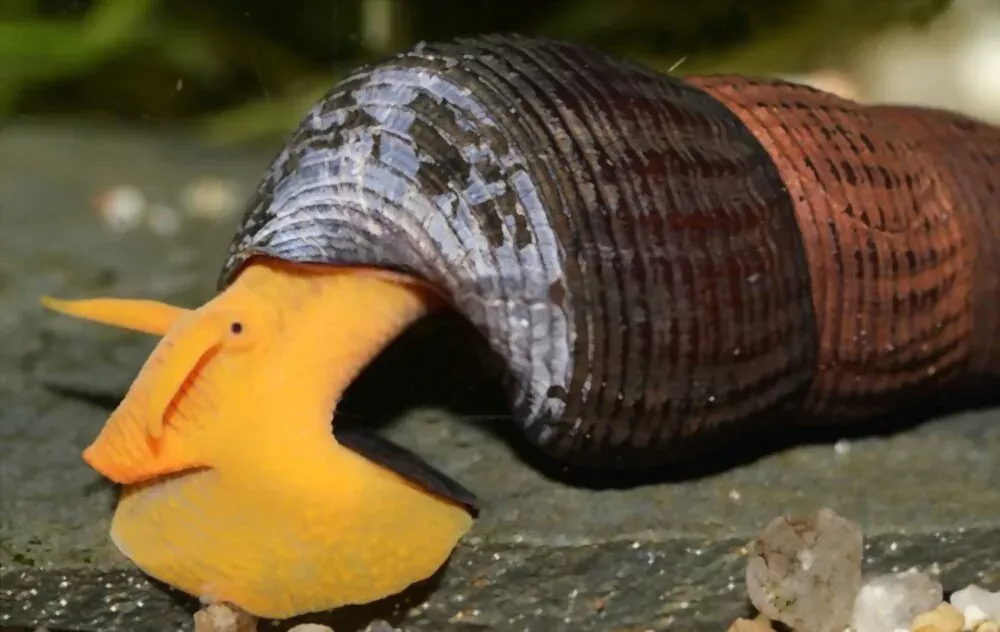
Rabbit snails can be the answer for you if you wanna clean algae from your aquarium! Rabbit snails are a type of freshwater snail that can grow up to six inches in length and have an eye-catching spiral shell. They love eating algae and can be a great addition to your tank. They’re also peaceful, well-behaved snails that don’t bother other fish or plants, so they can coexist with other species.
Before you get a rabbit snail for your aquarium, it’s important to make sure you’re ready for one. These unique animals are not right for every fish tank, but if yours is ready, it will be a healthy environment for a rabbit snail.
First of all, they need a lot of food (the rabbit part isn’t just there for looks), so you’ll need to feed them vegetables like spinach and zucchini as well as algae wafers and sinking pellets. You may want to keep your rabbit snail in its own tank until it’s settled into its new home; this way, it won’t have to compete with other fish for its food. Secondly, they require specific water conditions: the water must be between 65 and 85 degrees Fahrenheit with pH levels between 7.5 and 8.3.
2- Cerith Snail
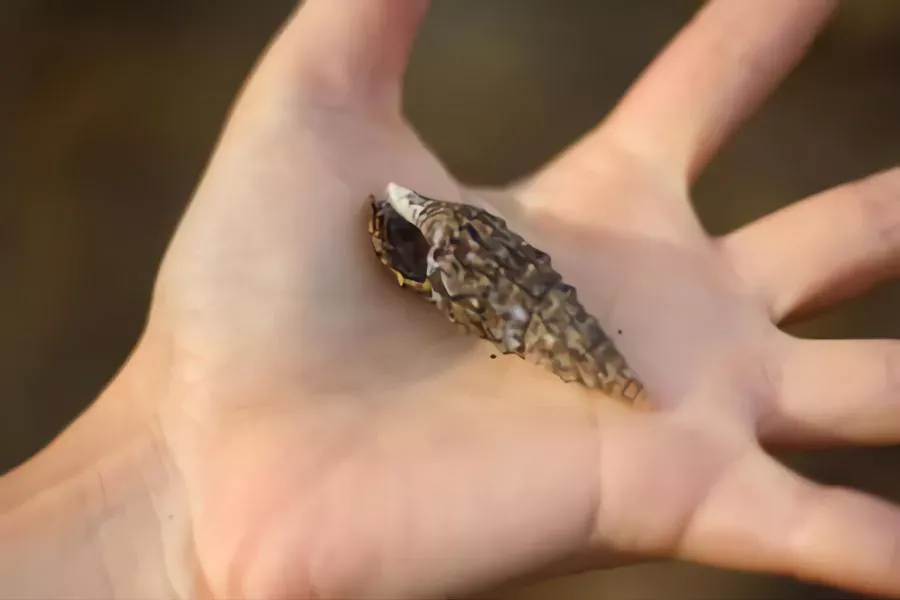
The Cerith Snail is a great addition to your fish tank! It’s nature’s vacuum cleaner and will help keep your tank clean and healthy. This snail spends its day crawling along the surface of rocks, plants, and even the glass, eating algae. The Cerith Snail is one of the few snails that don’t eat live plants, so it won’t be a problem for your beautiful aquarium live plants.
These are very peaceful creatures and do well in tanks with other gentle fish and invertebrates. They can also live with aggressive fish as long as there aren’t any small fish in the tank for them to prey on.
The Cerith Snail is native to tropical marine waters all over the world, including the Atlantic Ocean.
3- Astraea Snail

The Astraea Snail is one of the most common marine snails and a great addition to your saltwater tank. It’s an attractive snail with a large, striped shell that grows up to five inches. This snail also has a big appetite for algae, which makes it an extremely valuable cleanup crew member in any tank. Not only do they clean up leftover fish food, but they also eat hair algae and film algae that grow on the glass, powerheads, pumps, and other surfaces in your tank.
Though they’re quite efficient at cleaning algae, you should keep them well-fed and not rely on algae alone as their sole food source. They need additional nutrition from pellets and flake foods. You can also supplement their diet with dried seaweed tied to rocks or aquarium glass, which is especially beneficial if you’re trying to encourage them to breed within your tank.
Another benefit of these snails is that they’re very easy to keep alive since they adapt well to a wide range of conditions. They can tolerate a wide range of temperatures for short periods of time (though their ideal temp is between 72 F and 78 F) and are tolerant of most types of water. However, avoid keeping them in a new tank until the nitrogen cycle has been stable.
4- Bladder Snails
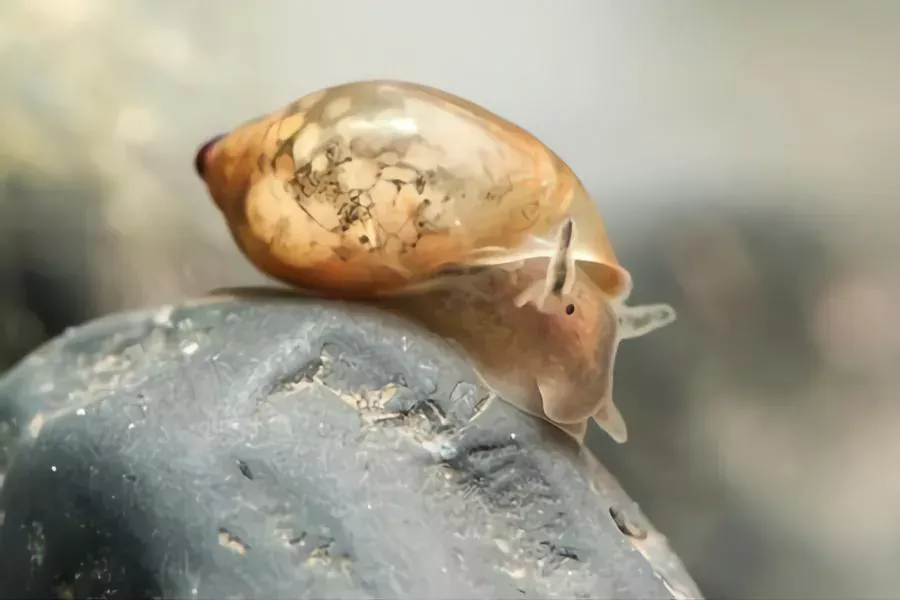
Bladder snails are great algae eaters, but they can be a bit of a nuisance. They are very prolific breeders and will multiply quickly in numbers.
Because these little critters thrive on algae, it is best to have your aquarium well-established before introducing them into your tank. This will help ensure that your tank does not become overgrown with bladder snails.
Bladder snails eat decaying plants, fish waste, and leftover food that settles at the bottom of your tank. While they do help keep things clean, they tend to be more trouble than they’re worth if the population gets too high. If you would like to keep some bladder snails as part of your aquarium’s ecosystem keep an eye on their population.
5- Ramshorn Snail (Planorbidae)
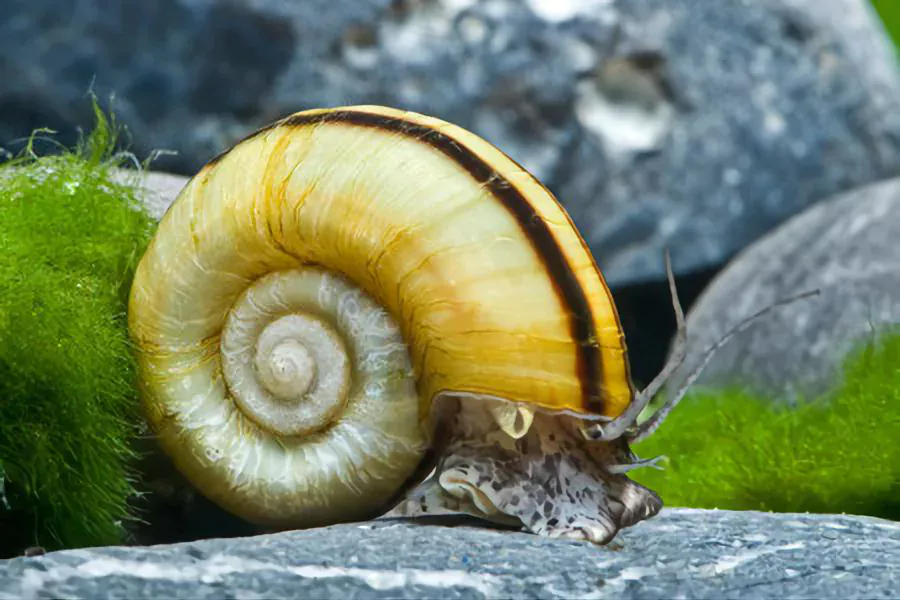
The Ramshorn Snails are also known for their ability to eat algae, and many people add them specifically for this reason. While this awesome snail does help keep the tank clean, it’s important to note that it will not keep the tank algae-free on its own. The Ramshorn Snail also has other habits that may or may not make it welcome in your aquarium.
Although Ramshorn Snails are relatively easy to care for, they are tolerant of a wide range of water conditions. They don’t require any special attention, as they will feed on whatever is available in the tank. However, you can supplement their diet with sinking wafers. They are quite small and don’t require much space, but still, they can reproduce very rapidly if left alone. Their eggs hatch after about four days and quickly grow into tiny snails that look just like their parents. If you don’t want your tank overpopulated with Ramshorn Snails or any snails, it’s best to remove these little ones before they have a chance to mature.
6- Malaysian Trumpet Snails
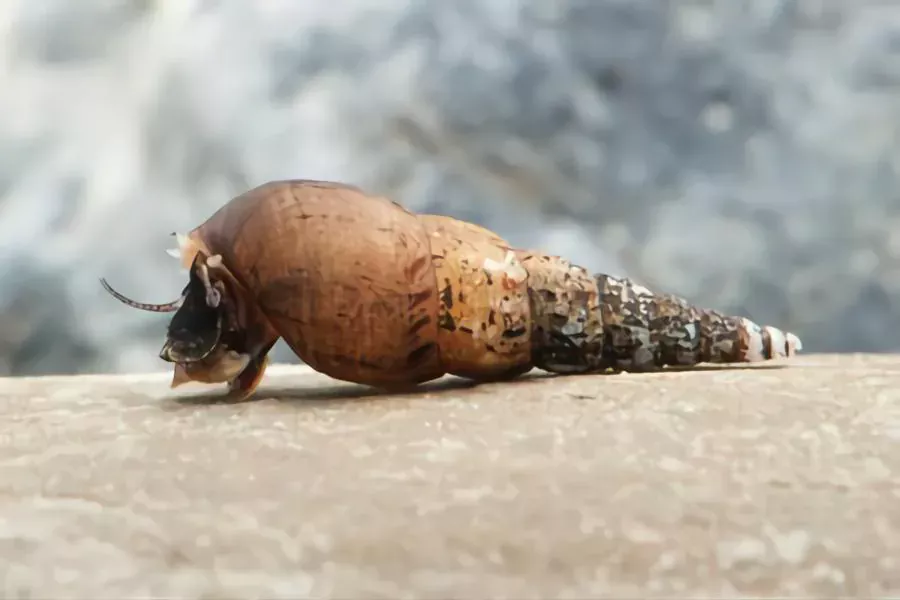
The Trumpet Snail is also not only good at cleaning your fish tank, but it also eats algae. This snail gets its name from its cone-shaped shell, which looks like a trumpet. They are usually black or brown in color, and they have tentacles on their heads with tiny hair-like structures on them. These tentacles help them search for food in the water.
The Trumpet Snail lives between six months to one year in your fish tank. It can grow to be about two inches long. The Trumpet Snail has an interesting way of reproducing. A male and female will mate, but then the eggs that the female lays develop inside her body. When the eggs hatch, she gives live birth to hundreds of young snails at a time.
Malaysian Trumpet snails eat away dead plants and leftover fish food that sinks to the bottom of the tank, and ofcourse they also eat algae off of surfaces in your tank including rocks and glass! They don’t bother live plants or other tank inhabitants except possibly eating up their food before they can get it, so they are generally considered safe to keep with any kind of fish or plant.
7- Nerite Snail (Neritina sp)
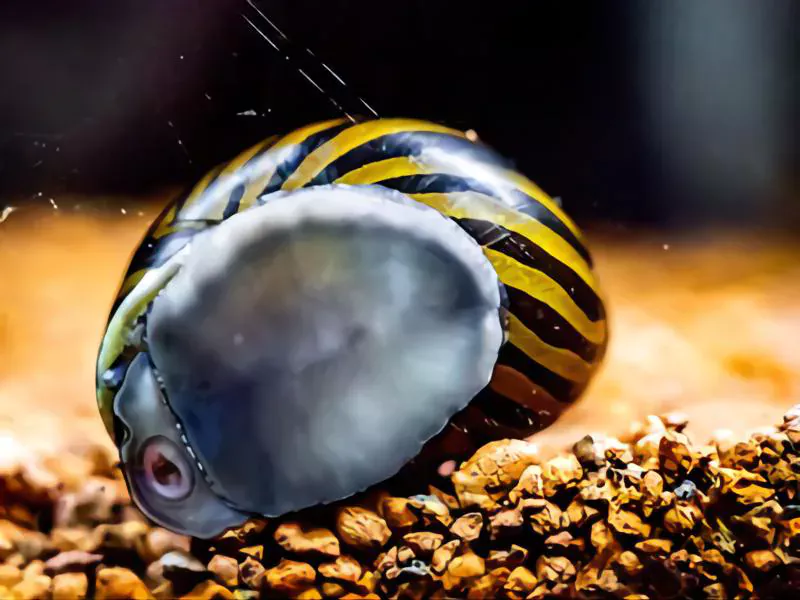
Nerite Snails can also help you keep the algae in your tank under control. Their diet primarily consists of various types of algae and plant matter, so they can be a great addition to any tank. In fact, nerite snails are probably one of the most popular snails to have in an aquarium. One thing that makes them so popular is their beautiful shells, which come in many different colors and patterns.
While Nerite Snails eat primarily algae, there’s no guarantee that they will solve all your algae problems. They’ll certainly help, but if you’re overfeeding your fish or not cleaning the glass in your tank, you’ll still have algae growing. You may also want to consider adding other species of snails to help with the eating as well.
One thing you’ll want to watch out for is making sure that your nerite snail doesn’t starve because if it can’t find enough algae to eat in your tank it may start eating plants and decorations instead! If this happens and you don’t find enough food for them, you should consider removing them from the tank or giving them supplemental food like spirulina pellets or even blanched vegetables.
FAQs
Do Mystery Snails Eat Algae?
If you’re interested in getting a mystery snail, you may be wondering if they’ll eat the algae in your tank or leave it be. The answer is yes, mystery snails will eat the algae in your tank. What’s more, they love to eat other things that algae-eating fish won’t touch, such as leftover fish food and dead plant matter. This means that mystery snails make a great addition to any tank, especially those with older fish that aren’t as interested in eating algae anymore. Mystery snails are lively, colorful, and friendly little creatures that can add some extra life to your aquarium!
Do Snails Eat Brown Algae?

Aquarium snails do eat brown algae and are good to add to a fish tank. They will also eat hair algae, soft algae, and green algae. But most algae eating snails only eat certain types of algae, so you need to make sure that your snail will actually eat what you want it to eat.
If you’re not sure what type of snail to get for your tank, it might be a good idea to get a few different kinds and see how they do.
Do Snails Eat Hair Algae?
Do snails eat hair algae? Yes, snails do eat hair algae. Hair algae are a nuisance in aquariums and the best way to deal with it is by getting effective algae eaters. There are several species of algae eaters that you can get for your aquarium and snails are one of them. Snails are a good choice when it comes to dealing with hair algae in an aquarium because they are peaceful creatures, easy to care for, and they can survive on other diets if the hair algae in your fish tank run out.
Do Snails Eat White Algae?
Yes! Snails are very good at eating white algae from aquariums. In fact, Snails will eat any type of algae including green, black, and white.
How Much Algae Do Snails Eat?
That depends on several factors. There are different types of snails, and they all have different diets, but all will eat some algae. It is important to understand the difference between herbivorous, omnivorous, and carnivorous snails. Herbivores will only eat plants or algae.
Omnivores will eat both plants and meat or insects. Carnivores are strictly meat-eaters. You also need to consider how big your snail is and what other types of food are available to them outside of algae.
A single mystery snail can eat up to 10 pounds of algae per year in your fish tank, but this is only if there are not any other food sources available for them to consume. As long as you don’t overfeed your fish with too much protein-based food and keep an eye out for excess vegetable matter like leftover lettuce and cucumber slices, you should be able to keep the algae in check without having to worry about overfeeding your snails.
How Do Snails Eat Algae?
It’s a little different from the way other animals eat. Snails have a radula, a tongue-like organ covered in tiny teeth that is unique to mollusks. A snail uses this to rasp algae from the glass and rocks of its tank, along with any bits of food that get stuck there. The radula also plays an important role in the snail’s love life, it helps male snails create a mating pouch for the female snail’s eggs during reproduction.
Which One Is My Favorite?
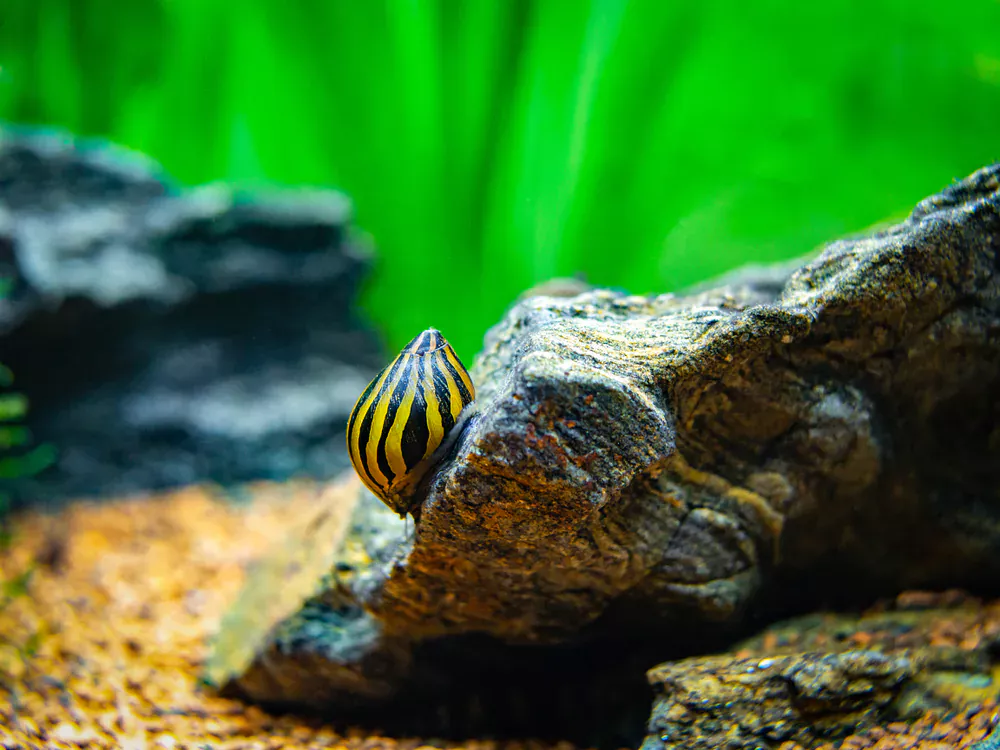
if you take my opinion, Nerite Snail is the best algae eater snail. they eat lots of types of algae, they are very small and do not get bigger than a half-inch, even when fully grown. They don’t breed in freshwater aquariums, so you won’t have to worry about them over popping your tank. Nerite snails can live in almost a wide range of water conditions, including water with low calcium levels.
In general, Nerite Snails are very good tank cleaners. Maybe the best part about Nerite Snail is that they don’t usually eat plants or other decorations in your fish tank. This means that they will not cause any harm to your fish or other creatures in your fish tank while they clean it.
Final Words
It is always a good idea to have some snails in your fish tank. They will help to keep algae under control, as well as eat leftover fish food and dead plants. However, this should not be a replacement for regularly cleaning your fish tank to remove algae.
